|
BULB LOG 35 --- 29th August 2007

Arisaema leaves collapse
It is very clear that " if that was summer then we have had it" as all the signs of autumn such as plants retreating underground are with us. The giant leaves of this Arisaema have collapsed as the stems start to go limp because the bulb is going into its long winter dormancy.
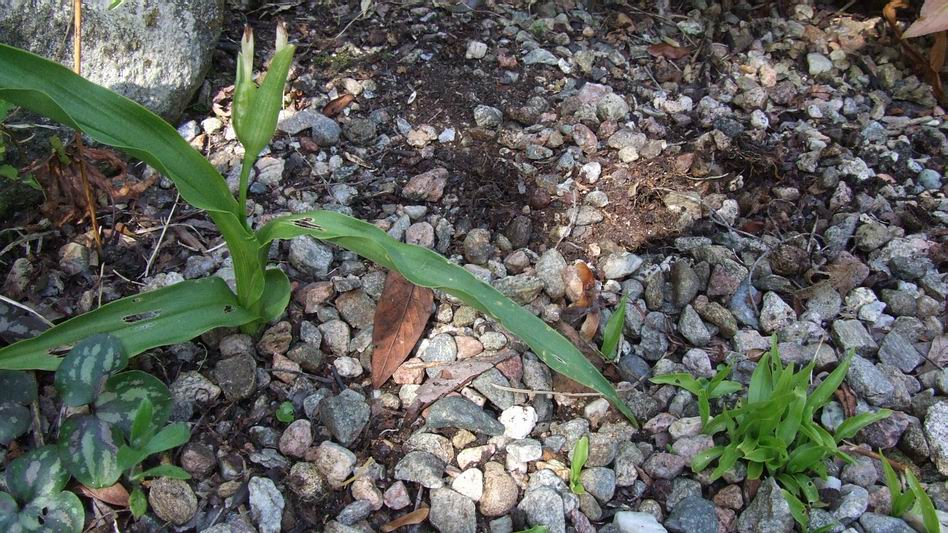
Roscoea seed and seedlings
A Roscoea seed head is swelling nicely and a cluster of seedlings have grown exactly where last years seed pod landed when the stem fell over. The original plant was a self sown seedling as the plant escaped the flower bed and sowed itself into the gravel path area, now all its progeny are doing likewise. Seeing this reminds me that I will have to get going and sow all my own collected bulb seeds - more on this in the next few weeks.
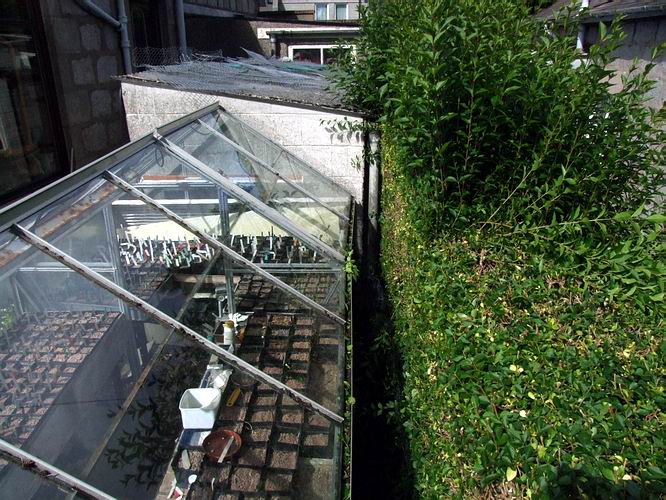
Hedge by bulb house
However, before I can start to sow the seeds or water the bulbs I need to give our hedges their annual cut. I also try and cut them hard back so that they just remain green and no more during August then they do not need cut again for another twelve months. I am not the kind of gardener that likes a nice sharp edged neat hedge - if I was I would never be done trimming the big hedges we have. You can see that the most vigorous growth always appears on the top of the hedge, where maximum light along with the shrub's natural habit, favour growth in height. It is also interesting to observe that the most vigorous growth of all the hedges is adjacent to the glasshouses due know doubt to all the food leaching out of the bulb pots when I am watering them. You can also see why I have to be so scrawny and am not allowed to put on any weight - it is so I can squeeze into the tiny gap between the hedge and the glasshouses for the annual harvest. Yes; I see the hedge trimmings as a harvest.
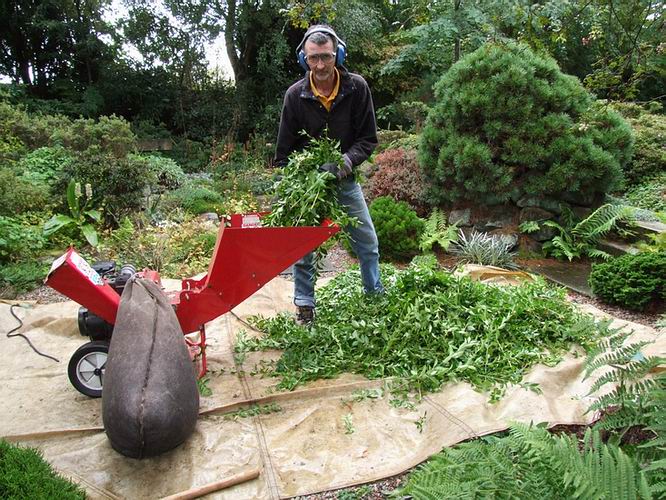
Shredding hedge trimmings
All of the trimmings are shredded by our trusty 5 horse power driven garden shredder which I must say makes very short work of the enormous pile of trimmings we end up with.
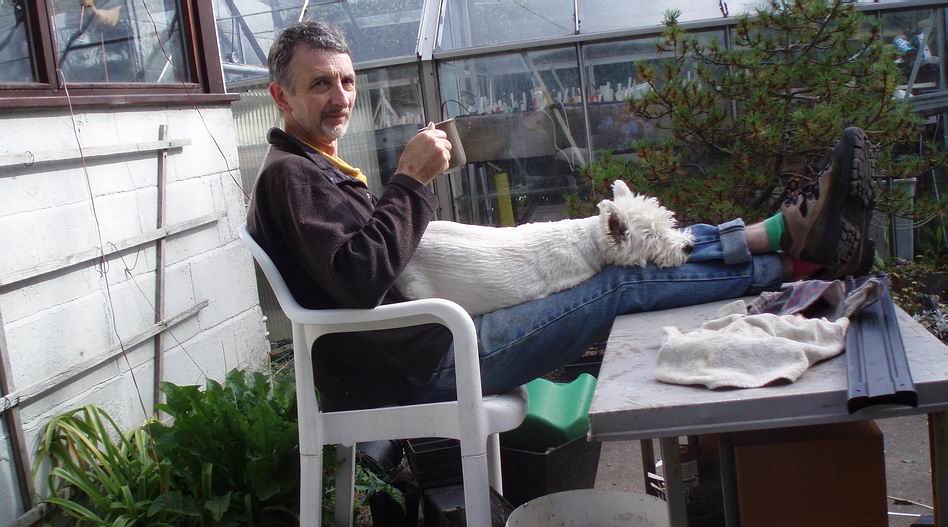
Having a break
It is essential to have the odd tea break when I can put my feet up for ten minutes and Miss Lily has a rest as well!
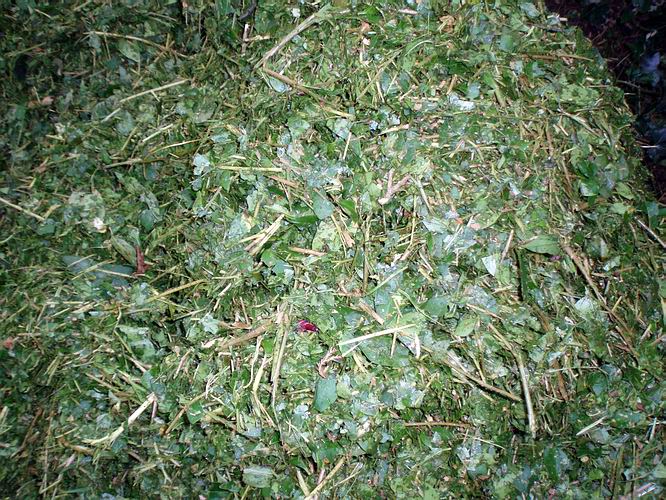
Shreddings
The volume of the hedge trimmings is greatly reduced as it passes through the shredder, coming out the other side not unlike a larger version of nice green tea leaves. I build the shreddings into a nice big compost heap which heats up overnight to a very healthy temperature which stays warm for quite some length of time facilitating a very rapid composting action to take place.
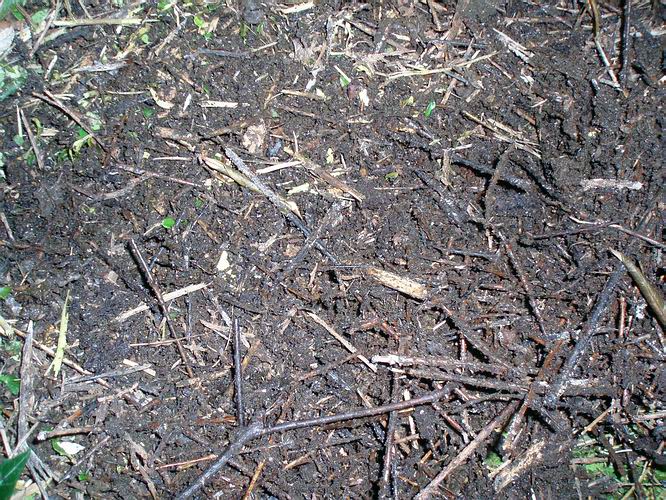
Composted shreddings
By February the compost heap will have shrunk in volume by about one third and I will have a very nice organic mulch that I can spread thickly over the beds. The leaves of the hedge turn into an excellent leaf mould to supply many nutrients while the twiggy material forms a good surface mat that helps hold in moisture during drier times of the year. We have built up a good layer of 'woodsy' soil at least 30cms deep over the many years we have been top dressing the beds in this way - it creates ideal growing conditions for Erythroniums, trilliums, lilies etc.
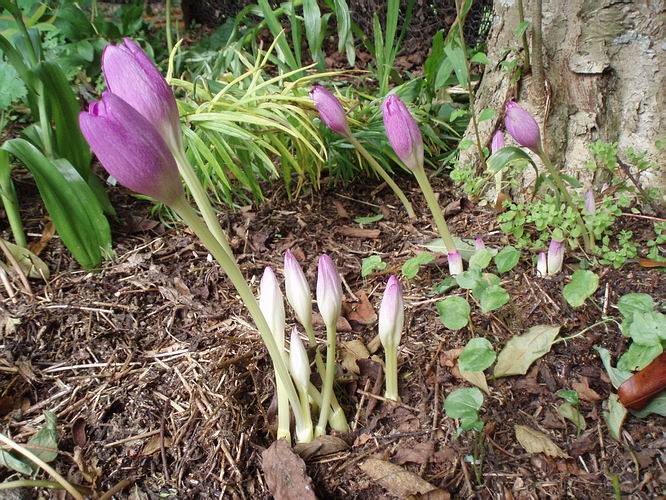
Colchicum tessellated hybrid
Here you can see some of our tessellated hybrid Colchicum coming through at the base of a tree in a bed that has been mulched in this way. The mulch also reduces the amount of weeds we get.
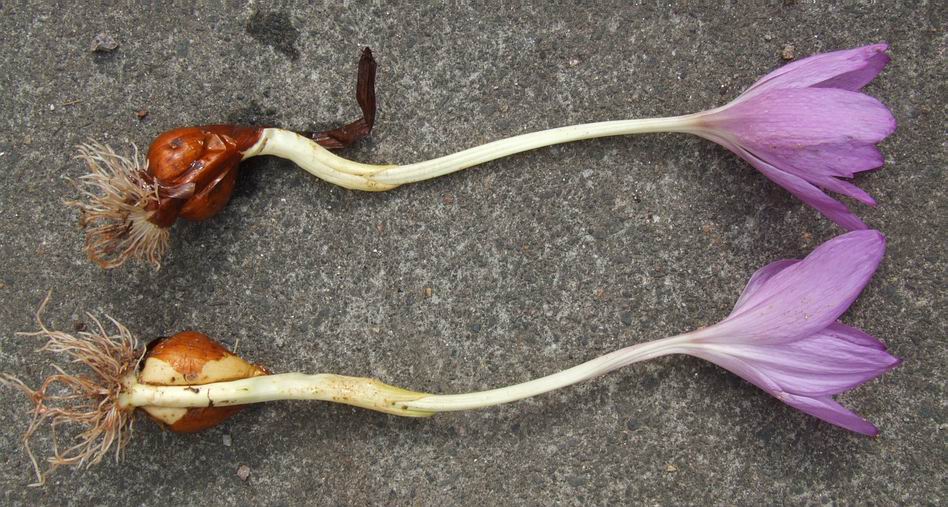
Colchicum corm
As you , the life of a bulb in my hands is not always easy as I am liable to up root it at any time to see what is happening under ground. Here you can see how the new growth emerges from the bottom of the bulb or corm, as it should be correctly named, as it gives every appearance of storing the food in a swollen stem.
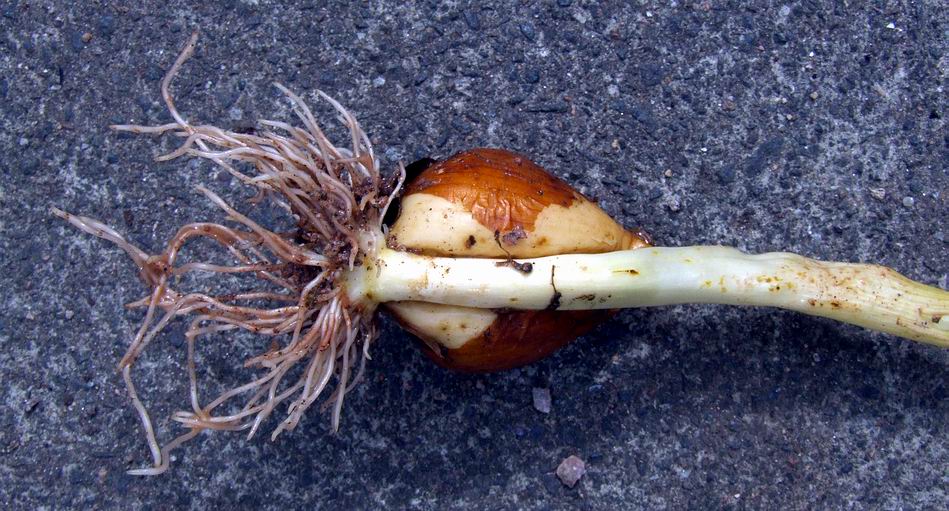
Colchicum corm close
A good root system emerges as the flower stem pushes up a groove at the side of the corm - the leaves will eventually follow forming around this stem and the remains of the leaf bases will form the brown tunic you get on colchicum bulbs. The base of this flower stem will swell up next spring to form next season's corm and at the same time the current corm will pass all its reserves on then wither away to a shrivelled mass.
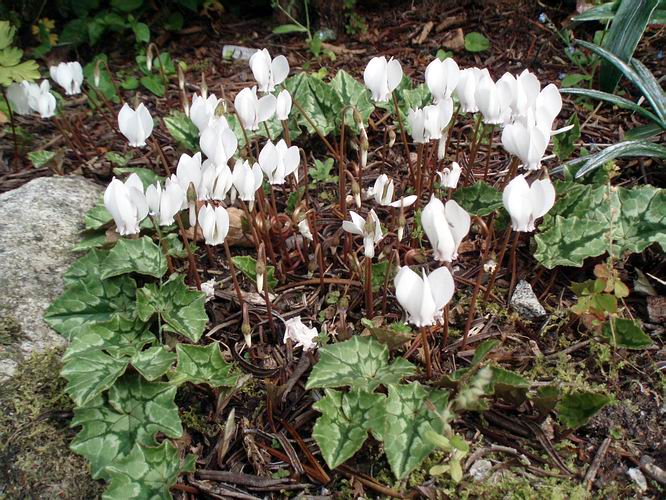
Cyclamen hedrifolium album
I have been so busy with the hedges that I have not had much time to look at what is flowering but I cannot help notice the many clumps of Cyclamen hederifolium album that we seem to have in the garden.
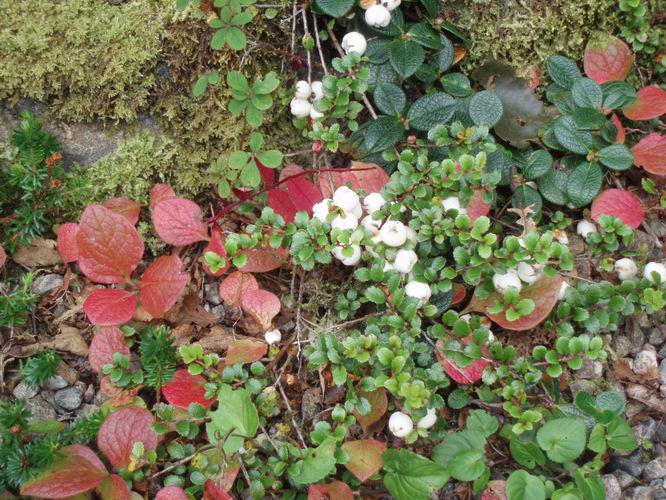
Gaultheria berries
Before I rush off to finish the hedges here is another sign that autumn is upon us is the ripening berries on this Gaultheria procumbens, growing through its close relatives the ever green Gaultheria pyroloides with its ovate reticulate leaves and the autumn tinted leaves of Vaccinium praestans, a fascinating shrub which, like Salix herbacea grows mostly underground, just sending up the twigs with the leaves on each spring.

Berries
Well the big white fruits are not actually berries but swollen bracts as you can see here: the seed is formed in a dry seedpod in the centre of the swollen fleshy bracts.
^ back to the top ^
|

